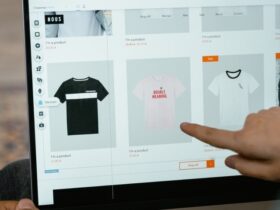In order to connect to a 3G, 4G, NB-IoT, Cat-M, or 5G wireless cellular network, Internet of Things (IoT) devices require a Subscriber Identity Module called an IoT SIM card. Subscriber Identity Modules of this kind are sometimes referred to as M2M SIM cards (for “machine-to-machine”). Most IoT SIM cards are billed monthly via IoT Data Plans.
The terminologies
The iot sim card, sometimes called UICCs for short, hold the credentials and security keys that indisputably identify a cellular subscription. A unique number called an International Mobile Subscriber Identity (IMSI) is used by the SIM card. Whether the gadget is online or offline, it will always have the same identifier. SIM cards may also run software programmes, one of which is responsible for sending authentication information to a built-in cellular modem. The modem, which is sometimes known as the radio or the radio module, is responsible for establishing the connection to the network. The acronym UICC may also refer to the software found on a subscriber identity module (SIM) card, and in certain contexts, the two are used interchangeably. The Subscriber Identity Module (SIM) card, incidentally, is a kind of smart card.
- Internet of Things (IoT) deployments, also known as connected gadgets that can be used everywhere in the world, need SIM card technology that can provide multi-network connectivity to numerous carriers without the need for unique cards to be used in each country or location. The term “global SIM card” may be used to apply to these cards as well. Two separate types of international SIM cards are now on the market:
- The traditional SIM model, sometimes known as a “roaming SIM,” allows users to access a single network regardless of where they are in the world thanks to the home operator’s partnerships with carriers in other countries. Unfortunately, the connectivity and reliability required to smoothly run IoT projects are not always provided by these SIM cards. This is due to the fact that, in case of an outage or a change in the partner agreements, there are no alternative networks available. Furthermore, the firm deploying its M2M devices has no say over which networks the interconnected devices should utilise.
the most cutting-edge SIM format, which employs a thing called Multi-IMSI SIMs. These SIMs have a large number of IMSIs stored on a single SIM profile. IMSIs may be used to access dozens or hundreds of networks, yet these SIM cards only need a single SIM profile. In a nutshell, this yields a merged list of networks that provide M2M and IoT solution providers the necessary latitude in terms of customization and freedom of deployment.
Several different shapes and sizes of SIM cards optimised for the Internet of Things are commercially available
Like the normal SIMs used in mobile devices like smartphones and tablets, IoT SIM cards come in a range of form factors, including mini, micro, and nano. They are often found in any piece of equipment that enables cellular communication, as opposed to, say, electronics that can only connect via WiFi.











